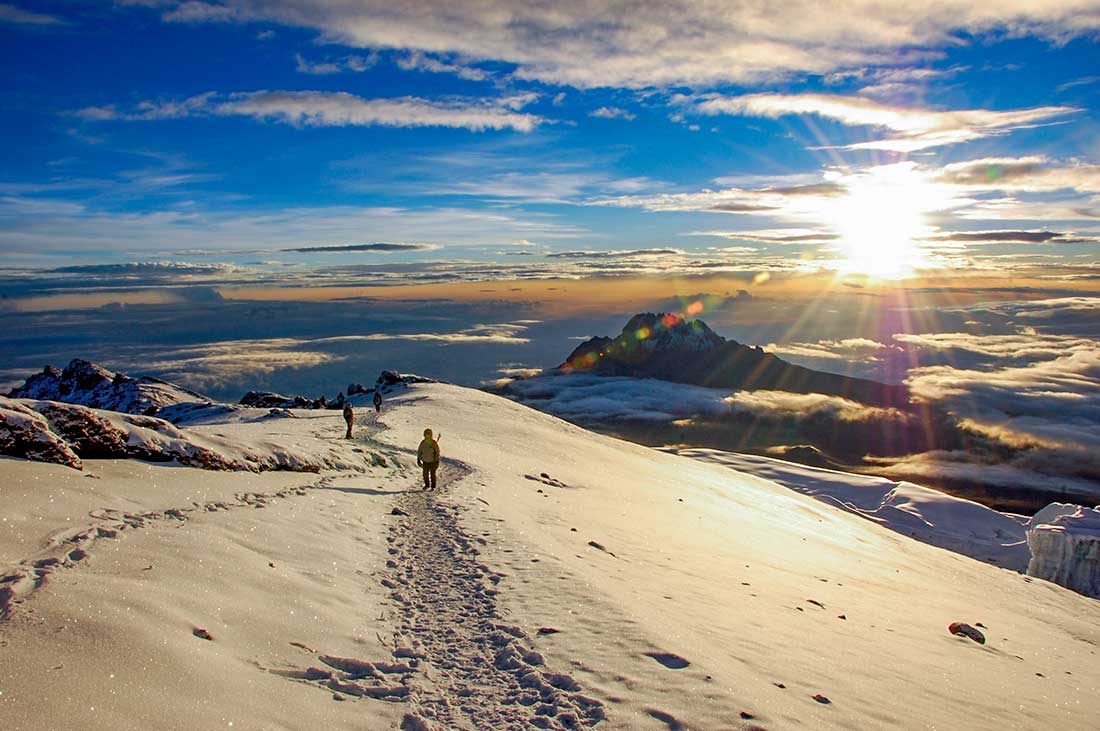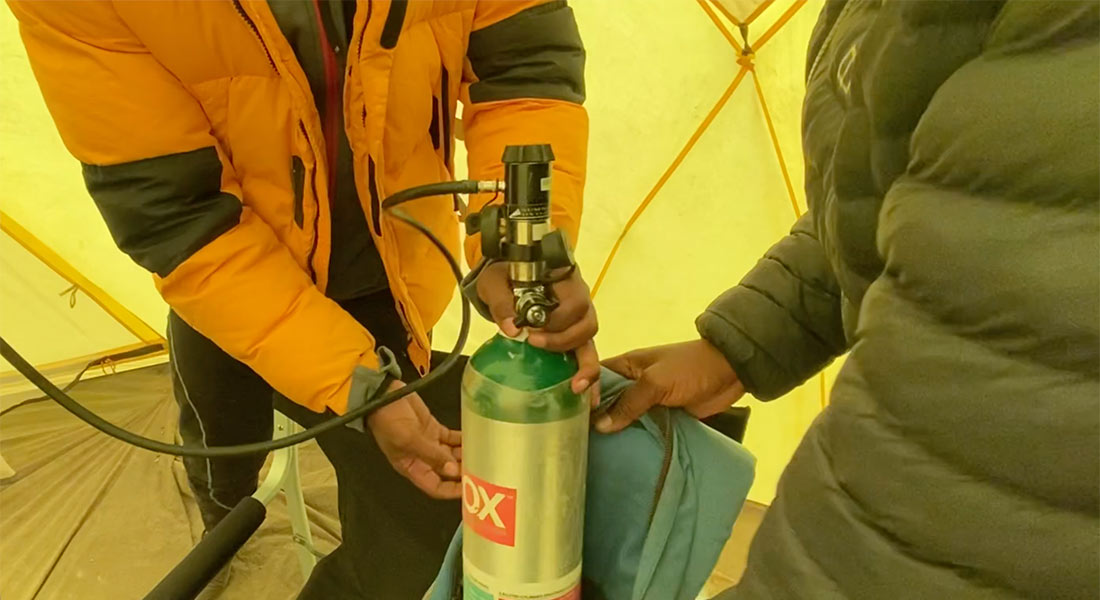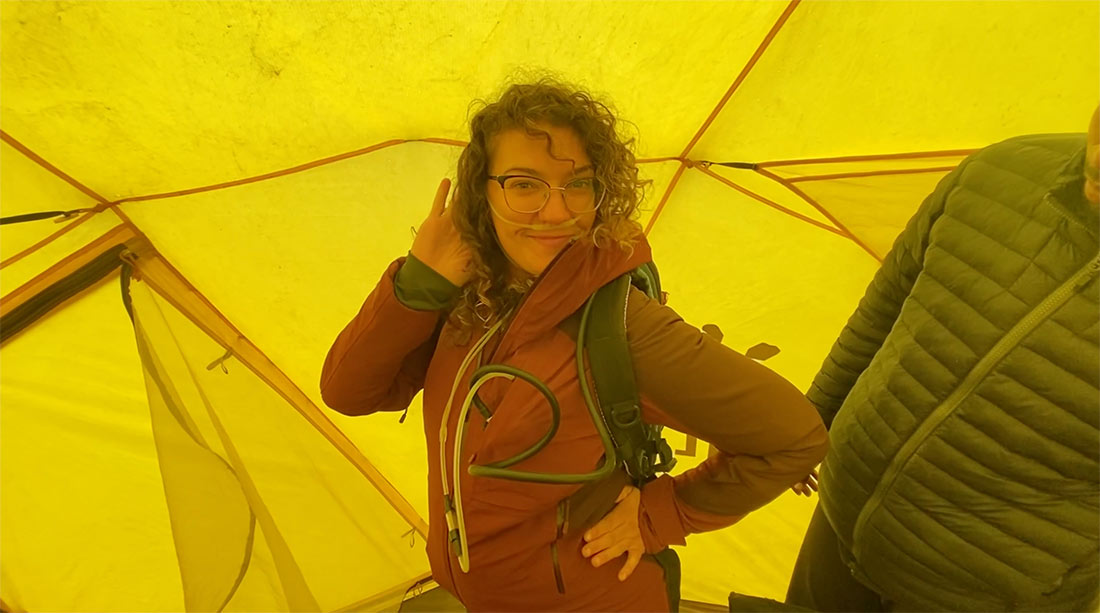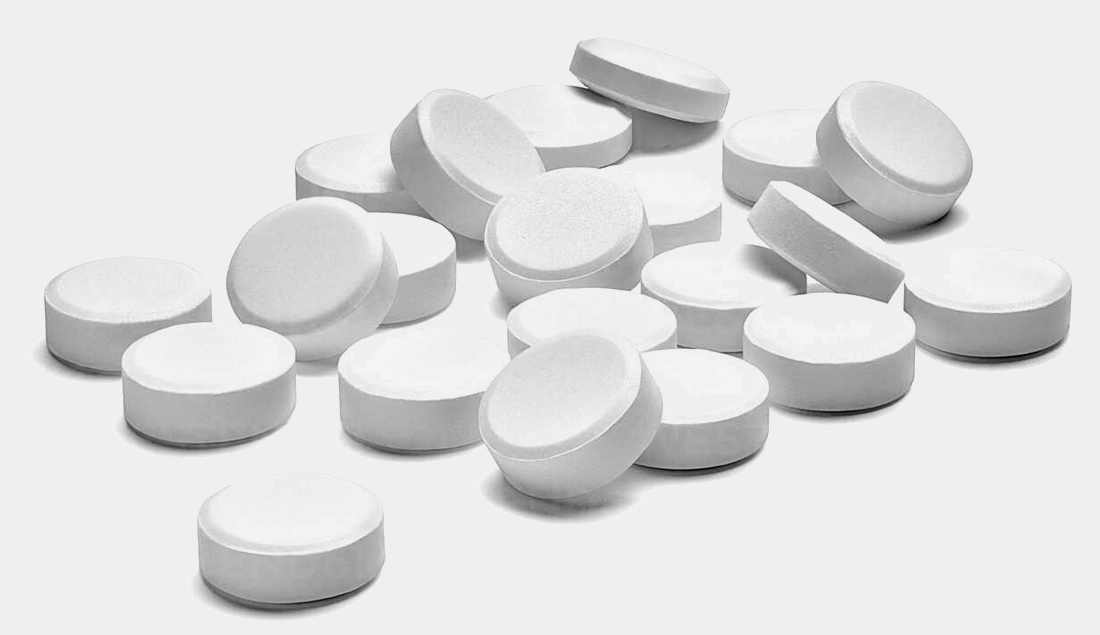Altitude can affect anyone, at any time, once you get to a high enough elevation. Science has not pinpointed what causes one person to react and not another. Or even weirder why does it affect you one day and not the next?
Until we know for certain what causes your body to react to the extreme elevation gain you endure while climbing Kilimanjaro we will continue to do the climb-high sleep-low technique and hike at a slow pace. That way you’ll have the best chance of making the summit of Kilimanjaro.

ALTOX
Let’s first discuss ALTOX. ALTOX is a brand of oxygen system the trekker can wear. It is like a dive tank for scuba. You wear a pack with one canister of oxygen in it. A small hose attaches to a regulator to adjust the frequency of oxygen dispersion. From the regulator, the hose continues over your ears before following around under your nose. The unit deploys a puff of oxygen into your nose at set intervals.

We only use this method on summit night. Any other time on the ascent will mask the symptoms of altitude sickness and can be deadly. For example, if you started using it at 12,000 feet and then sleep, you could potentially not wake up.
Since you ascend and then descend to 10,000 ft on summit night your body will have a chance to recover from the high elevation. Furthermore, you won’t be sleeping until you have descended below the dangerous heights.
“I started feeling the altitude around 15,000 feet, approaching Lava Tower,” said Wentzel. “Since I only had ALTOX on that trip, I had to tolerate the discomfort.”
“On summit night, I used the ALTOX from 17,500 feet to the summit. I honestly don’t think I could have made it without it. I was lethargic, nauseous, and had a massive headache. Once I swapped my pack with the porter’s and put on the ALTOX, I felt better within just a few minutes.” Wentzel continued. “I literally ran the last few switchbacks to the crater rim, I felt great!”
Pro
ALTOX is very effective in helping with high elevation. Once you put it on, it takes about 10 minutes to feel good.
Con
- It is bulky.
- It is expensive- you have to hire an additional porter to carry it for the entire trip.
- Only works when wearing it.

DIAMOX
Let’s discuss Diamox and how it works. Diamox or Acetazolamide aids in preventing and reducing the symptoms of altitude sickness.
Acetazolamide is also used with other medications to treat a certain type of eye problem such as open-angle glaucoma. Acetazolamide decreases the amount of fluid that can build up in the eye.
Additionally, it is used to decrease a buildup of body fluids (edema) caused by congestive heart failure or certain medications.
Acetazolamide should only be used for short periods. It loses its effectiveness the longer you use it.
Acetazolamide also treats certain types of seizures such as petit mal and unlocalized seizures.
HOW TO USE DIAMOX
If you choose to take Diamox, you’ll take it by mouth 1-4 times daily. It does cause frequent urination so we recommend taking it once in the morning and once you arrive at camp in the afternoon. That way you’ll avoid getting up several times overnight to pee.
For the dosage, we recommend 125 mg in the morning and 125 mg in the afternoon. You can either have a prescription for 125 mg or break 250 mg in half. We also recommend taking at least one or two doses before heading to Africa to make sure your body doesn’t react.
Once on your way to Tanzania, start taking it 1 to 2 days before you start to climb. Continue taking it until you have reached the summit. Once you reach the summit you’ll descend quickly below 12,000 ft or more depending on the route you are climbing. However, you should not stop taking Diamox, take at least 125 mg for a couple of days after the summit.
PRO
Your blood oxygen levels may stay higher by using Diamox. For example, without it, your stats will drop each day as you ascend. It should start above 90 at the lower elevations and as you continue up it may drop each day as you get closer and closer to the summit. It may drop into the 70s. Normal pulse oximeter readings usually range from 95 to 100 percent. Whereas below 90 percent is low. Nevertheless, under 90 is common on Kilimanjaro and doesn’t become an issue until it starts dropping into the low 70s or lower.
What does this mean? Low blood oxygen levels can lead to Hypoxemia. Hypoxemia is a below-normal level of oxygen in your blood, specifically in the arteries. Hypoxemia is a sign of a problem related to breathing or circulation and may result in various symptoms, such as shortness of breath.
You can measure this fluctuation with a pulse oximeter. It is a small device that clips to your finger and reads the oxygen in your blood.
Other pros of using Diamox are a decrease in headaches, tiredness, nausea, dizziness, and shortness of breath.
CON
Common side effects can include dizziness, lightheadedness, and an increased amount of urine, especially during the first few days as your body adjusts to the medication.
Blurred vision or vision change is a less common side effect. This can be blurry, up-close vision, that should resolve itself in a few days. Increased sensitivity to the sun, particularly sunburn is another uncommon side effect.
Other rare side effects include dry mouth, drowsiness, loss of appetite, nausea and vomiting, constipation or diarrhea, changes in taste, headache, fatigue, weakness, nervousness, confusion, ringing in your ears, and/or hearing problems.
“On my most recent Kilimanjaro climb, I used Diamox. It worked great,” said Wentzel. “My stats never dropped below 90 for the entire climb.”
“I did suffer from one of the side effects,” he said, “I got a pretty severe sunburn on day three heading across the Shira Plateau to Shira Cathedral.”
“Another person lost their nearsightedness once they stopped taking it after they made the summit,” said Wentzel. “They had to wear reading glasses for a couple of days until their eyesight returned to normal.”
Final Thoughts
Ultimately it is up to you what you chose to do when it comes to handling the intense elevation gain of Kilimanjaro. What’s better ALTOX or Diamox on Kilimanjaro? Perhaps for you, it’s nothing. For Wentzel it was the Diamox. He normally struggles with altitude but didn’t have any adverse reactions to it. It also kept the altitude symptoms from being too severe.
Keep in mind that your body can react to the elevation at any time. “One of our guides had to go back down the mountain from about 10,000 feet and sleep for several hours before continuing up the mountain,” recalls Wentzel. “He had been guiding for more than nine years and never had an issue with altitude.”
Since we are not doctors we are only relaying what we have seen from our clients and personally experienced using ALTOX and Diamox on Kilimanjaro. Consult with your doctor and see what they think is right for you. In the end, making the summit is your goal, but only if it doesn’t put your life at risk.




